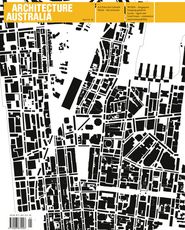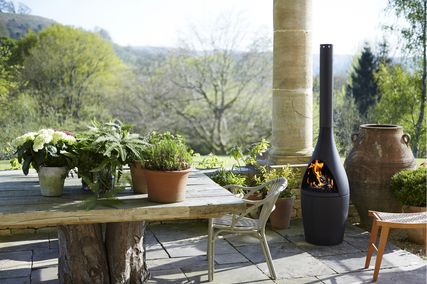Non-Fictional narratives: Denton Corker Marshall
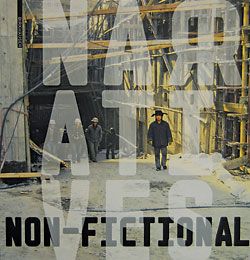
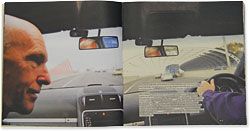
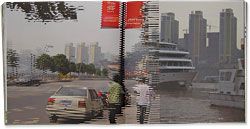
Essays by Leon van Schaik, Jianfei Zhu, Nikos Papastergiadis and Deyan Sudjic. Birkhäuser, 2008. 293pp. $135.
Non-fictional Narratives surveys Denton Corker Marshall’s recent work in Melbourne, as well as describing several specific projects, treated photographically at some length, in the Yarra Valley, Manchester (the “twinned city” of Leon van Schaik’s introductory essay), Brisbane, China and Jakarta. Van Schaik’s often distracted introduction makes big claims on the firm’s behalf, seating it awkwardly at an international table, but he studs the essay with paragraphs accounting intelligently and clearly for the architectural works selected for the book.
Non-fictional Narratives presents a number of discrete architectural works solely through a short series of representative plans and a folio of photographs: Brisbane Square, the Australian War Memorial (both documented by John Gollings) and Wilson House in the Yarra Valley (photographed by Shannon McGrath). Information is spare, and one relies heavily on van Schaik’s prose to position the work. The book’s structure strongly implies that the reader ought to already know the work – most likely the case for its Australian audience, but not necessarily so further afield.
Two other projects enjoy extended commentary: Nikos Papastergiadis writes on Webb Bridge in Melbourne, although this short piece doesn’t serve to fill in many blanks; Deyan Sudjic’s piece, the smartest writing of the volume, matched to the best building, offers a sharp commentary on the Manchester Civil Justice Centre. In addition, Jianfei Zhu sets up the section Denton Corker Marshall in China, locating the work there historically and culturally.
The slicker dossiers of photographs by Gollings, McGrath, Tim Griffith and others are conventional enough, and appropriate to a coffee-table book, a genre to which this volume appears, in part, to aspire. Gollings’ engaged survey of Denton Corker Marshall’s recent Melbourne work offers a visual homage to the radical tone of S, M, L, XL, while intermittent text blocks convey something of the firm’s attitude to practice in Melbourne’s architectural culture.
What seems a plausible documentary treatment for Melbourne comes unstuck in China, as the reality gets grittier and the work less interesting. Graphic designers emerystudio should have rethought the horizontal interference pattern muddying the images of Chinese projects, a device carried forward to documentation of Denton Corker Marshall’s work in Jakarta. Stripy photographs signal Asia, it seems, although I don’t get the connection.
Setting aside the tricks and ballast, Non-fictional Narratives is a curious object and a useful visual record of the recent work of one of Australia’s most prominent international practices.
Andrew Leach
Modern Times: The Untold Story of Modernism in Australia
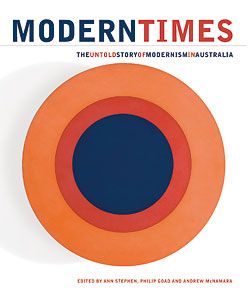
Edited by Ann Stephen, Philip Goad and Andrew McNamara. The Miegunyah Press (Melbourne University Publishing) and the Powerhouse Museum, 2008. 254pp. $49.99.
What was it to be “modern” in Australia? Did it involve an engagement in abstract aesthetic arguments? A utopian urban vision to rival the City Beautiful movement and the Garden City ideal? A departure from formal imitation? It was many things in a variety of disciplines, suggests this interdisciplinary book – the result of a long-term research project into the reception of modernism in Australia, and an accompaniment to the exhibition of the same name currently being staged at Sydney’s Powerhouse Museum. But importantly, modernism in Australia – at a distance from the movement’s incubatory centres in Europe and North America – was shaped by both collaborative and individual efforts rather than through an institutional embrace.
In this country, suggest the editors, modernism has until now been examined within the confines of specific discipline groupings, whereas the movement itself was multidimensional and even contradictory. The book examines the period 1917 to 1967 – a span of time bookended by the United States’ declaration of war on Germany and the first live global satellite broadcast. In Australia, 1917 witnessed railway strikes in NSW over proposed Taylorist work-efficiency models, and 1967 saw a referendum granting equal rights to Indigenous Australians. Unique local conditions and the lack of a blanket approach shaded the absorption and interpretation of overseas developments in the disciplines discussed – architecture, visual art, design, animation, fashion, popular culture, film and photography. A key strength of this book is its compilation of detailed and impressively illustrated studies of specific and varied moments in those turbulent decades.
Chapters, animated with biographical, historical and analytical content, are grouped into five parts – Abstract in Australia, Bodies and Bathers, City Living, Designs on the Space Age, and Electric Signs and Spectacles. The exciting diversity of material sees City Living juxtapose Elizabeth Farrelly’s survey of the late birth of an American-scaled skyline for central Sydney (and the problematic idea of planning as a form of deal-making) and Nanette Carter’s account of 1930s milk bars, with their shiny new materials (including tubular steel and laminate) and streamlined counters. In Abstract in Australia, the ironies of “Aboriginal modernism” are explored by Indigenous author Steve Miller alongside Heather Johnson’s account of an exhibition of modern furniture at Sydney’s Burdekin House in 1929.
The diversity of subject matter in this attractively designed publication delights as much as the variety of images, which were drawn from the Powerhouse Museum collection as well as from objects lent for the exhibition by public and private sources. The book avoids the tone and style of an exhibition catalogue and makes a worthy partner to the editors’ 2006 title Modernism and Australia: Documents on Art, Design and Architecture 1917–1967.
Narelle Yabuka
Renovation Nation: our obsession with home
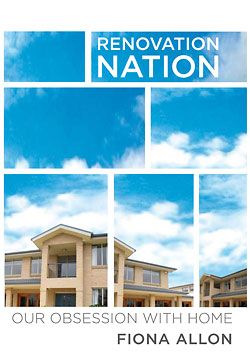
Fiona Allon.
UNSW Press, 2008. 240pp. $34.95.
Australians’ obsession with all things related to the home is the subject of Fiona Allon’s book Renovation Nation. Given the scale and intensity of this obsession, demonstrated with zeal by the author, it seems surprising that this is one of very few books that approach this subject with the critical scrutiny it deserves. Apart from a few noteworthy (and now rather dated) examples such as Robin Boyd’s The Australian Ugliness of 1960 or Hugh Stretton’s 1974 Boyer lectures Housing and Government, there have been few attempts to seriously debate the Australian home and its place in national culture for a general audience.
Like Boyd, Allon uses the home as symbolic of national tendencies and characteristics. Similar to Boyd’s condemnation of “featurism”, Allon uses the shorthand description “renovation nation” to draw parallels between our preoccupation with home ownership, property investment and renovation and a national politics that is insular, defensive and fearful – “fortress Australia”. She argues that over the past few decades “the image of the home became tied to a particular conception of citizenship and suburban living that privileged ownership, asset acquisition, market rationality and traditional family values above all else.” Her arguments are often persuasive and insightful, as she ranges widely and smoothly over diverse topics, often presenting dazzling statistics to illustrate her arguments. From 1997 to 2007, for example, of the $770 billion borrowed by Australian households, $420 billion was spent on houses to live in and $240 on investment properties – a staggering amount of housing-related debt.
Several chapters of Renovation Nation explore the recent history of the Sydney suburb of Earlwood, where John Howard grew up. Allon argues that Howard’s romanticized memories of life in the suburb in the 1940s and 1950s shaped his vision for the nation as “relaxed and comfortable”. His inability to relate to or appreciate how Earlwood has transformed into a diverse and multicultural suburb also explains Howard’s reactions to aspects of globalization that challenged this vision, such as the plight of asylum seekers. These chapters are lively and Allon’s examination of the local illuminates both the national and the global.
Other parts of the book, however, lack this kind of local or personal dimension and are poorer for it. Chapters that use the dominance of home renovation and property in the media to frame larger arguments did not engage me in the same way as Allon’s observations of how people actually live in the houses and streets of suburbs like Earlwood. Just because millions of people watched The Block does not mean that this was really anything more than vicarious entertainment! This type of critique dominates the book and for me, it did not move beyond dense analysis to posit alternatives of how a new politics of home could reshape our national obsession. Renovation Nation is perhaps just the foundation for further speculation. I hope it provokes more of our writers and thinkers to take on the subject of the contemporary Australian home.
Jo Besley

